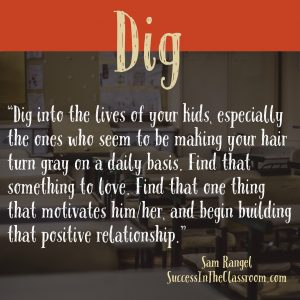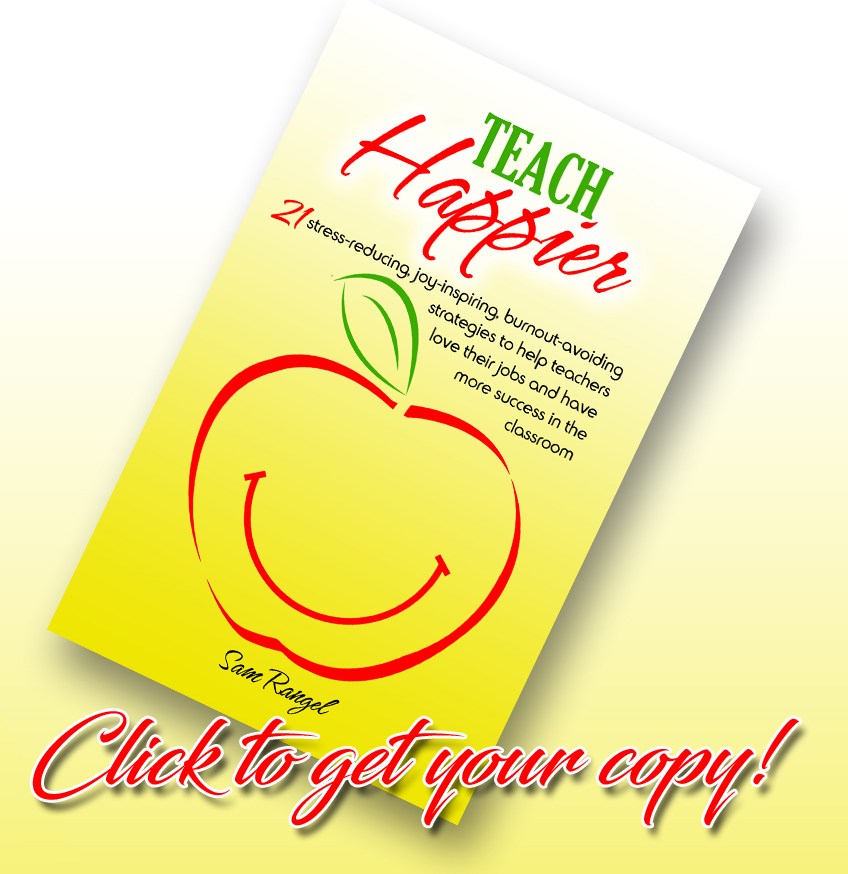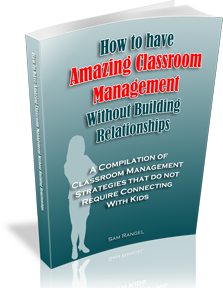Over the next few posts, I would like to share some important keys to classroom management success. Any experienced teacher will tell you that creating a classroom environment where students are able to learn is an essential. Successful teachers make classroom management one of the foundational elements of their lessons.
Successful classroom management, however, does not come easily. Each class is different, and every year, teachers have to adjust their system to meet the needs of their students.
There are some basic foundational principles that I’ve learned over the years in my experience as a teacher, as well as from some amazing teachers who I have known and interviewed, that I’d like to share in these posts.
I’m calling these principles: Keys to Successful Classroom Management.
The first key in this series is: Build Relationships with ALL your Students.
I serve as an assistant principal in a middle school in Southern California, and part of my job is handling discipline issues. For that reason, if a student comes to my office, it’s usually because he/she has made a bad decision. It’s my job to counsel the student, then give a consequence, call parents, etc. Fortunately, we don’t have too many major behavior issues at my school, so I really don’t have to bring the hammer down too often.
Today, I met Blake.
He had made the decision to steal a couple of pencils from another student’s binder, and he was caught.
As Blake sat in the chair on the other side of my desk, he was obviously a little nervous. This was his first time in my office. He didn’t know me, and I didn’t really know him.
After we spoke about what happened, I looked at him and said, “Blake, I don’t know you. Do you know what that means?”
He didn’t answer.
“Right now,” I continued, “all I know about you is based on what happened this morning. You stole something from another student. I don’t know anything else about you, because we’ve never met before. So, if I was to talk about you to my friends, how would I describe you to them?”
He said, “As a bad kid.”
I said, “Right, because that’s all I know about you.”
Then I asked him, “Are you a bad kid?”
He said, “No.”
Then I spent the next few minutes getting to know him. I learned about his family life, his likes and dislikes, his favorite classes, his friends, etc. It was awesome.
Before he left, I said, “You’re right, Blake. You’re not a bad kid. You’re a pretty cool kid. You’re a good kid, who just made a bad decision. You won’t do that again. Right?”
He smiled, and said, “Right.”
Although, I had to still give him a consequence, I was able to turn his negative encounter into a more positive one, and he left knowing that the assistant principal cares about him. I was able to build a strong bridge between us, and now every time I see him on campus, we’ll be able to give each other one of those cool head bobs.
How many times when I was first starting out as a teacher did I place some of my students into the “bad kid” category without even getting to know them? They disrupted my class or made a disrespectful comment, and automatically, I mentally added them to the bad kid list. That wasn’t fair to those kids.
Over the years, I’ve learned an important lesson that I’d like to share with you in this post. When I labeled a student as a bad kid in my mind, they knew. I didn’t have to say or do anything to them, but they knew that I didn’t care about them as much as the “good kids.” Kids know! There is even research that proves that our beliefs are demonstrated by our actions, whether we want to admit it or not. It’s called the Pygmalian Effect. You can learn more by clicking on this link.
As a result, those negative behaviors never improved, and my classroom management suffered.
Understanding this, I made the decision to fight the natural tendency to label kids as “bad” and to choose to believe that all my kids were good. That wasn’t easy, but it was what turned my class around.
When you choose to see ALL your kids as good kids, your chances of having successful classroom management improves. Yes, some of our kids make more poor decisions than others, but we have to remember that they are still good kids. We can’t place the “bad kid” label on any of our students if we want to have successful classroom management.
What makes this mindset change easier is getting to know our students more. When we do, we begin to build that bridge that allows us to create and maintain that positive classroom environment so essential to successful classroom management.
“But Sam, you don’t know Johnny. There’s nothing good in Johnny.”
I’ve actually heard this from a teacher before. I’ve actually believed this about students before. How sad.
If we dig deep enough, we will find something to love in every one of our kids, even Johnny. We have to dig, and keep digging, even when the other teachers give up.
I like what Amy Norman from Northern Territory Australia shared on Instagram:
“Find something to love about each student and tell them how much you care about them. Kids know when adults care about them or don’t like them.” @mrs_teach_it
This is so true. Kids know. If you Instagram, make sure you follow Amy.
Choosing to find value in every student is the first part of building strong relationships with them.
Author and speaker, Brad Currie, states “Above all else, connect with and get to know your students. Be available in both the physical and virtual worlds. Relationships are the key to managing a positive classroom environment.” @TheBradCurrie
How much do you know about your students? How much do you know about Johnny?
If you are struggling with classroom management, I would encourage you to make the decision to dig. Dig into the lives of your kids, especially the ones who seem to be making your hair turn gray on a daily basis. Find that something to love. Find that one thing that motivates him/her, and begin building that positive relationship.
Years ago, I created a simple student questionnaire that I would give my students on the first day of school. They would take it home, answer the questions, and bring it back on day two. The last question on the sheet has the question, “What is one thing you would like to know about me?” I would spend part of the class going through all of the questionnaires answering that last question. It was so cool. I used that second day of class to begin the process of building our bridge between us. The questionnaire also gave me an insight into the lives of my students, and I would study these sheets thoroughly as my way of digging. When that student began to reveal himself as the one who is being most disruptive, I would go and find his questionnaire, and dig some more.
If you are interested in downloading this questionnaire, I’ve made it available here.
Who Am I Questionnaire – Word version (Feel free to add or delete questions to fit your student population. )
Who Am I Questionnaire – PDF version
I hope you found this post helpful. If you did, please share using the Social Media icons below. Stay tuned for the next installment of this series. Even better, sign up to for the SITC Newsletter and get notified by email when it’s posted. Click here!
Don’t forget to check out my book, Teach Happier – 21 stress-reducing, joy-inspiring, burnout-avoiding strategies to help teachers love their jobs and have more success in the classroom.
Until next time, here’s to your Success in the Classroom!
Thank you,
Sam



